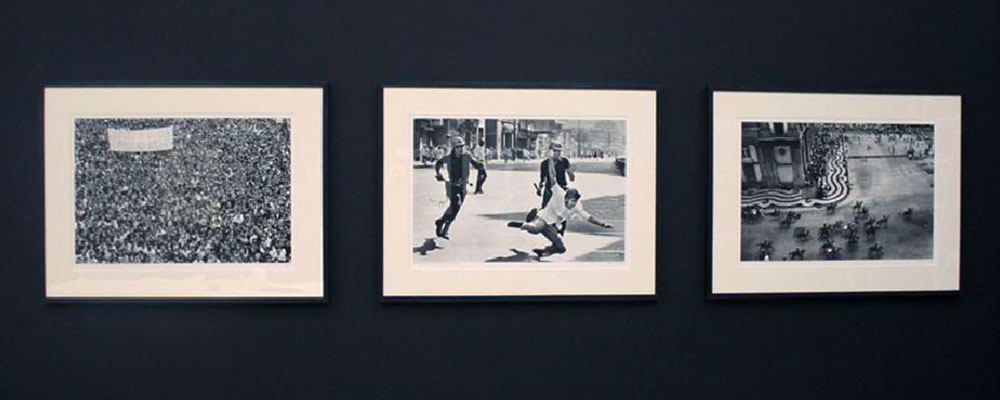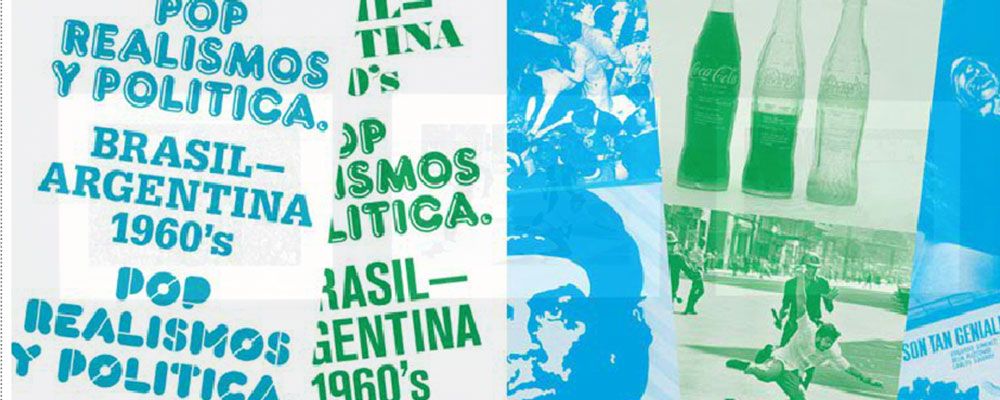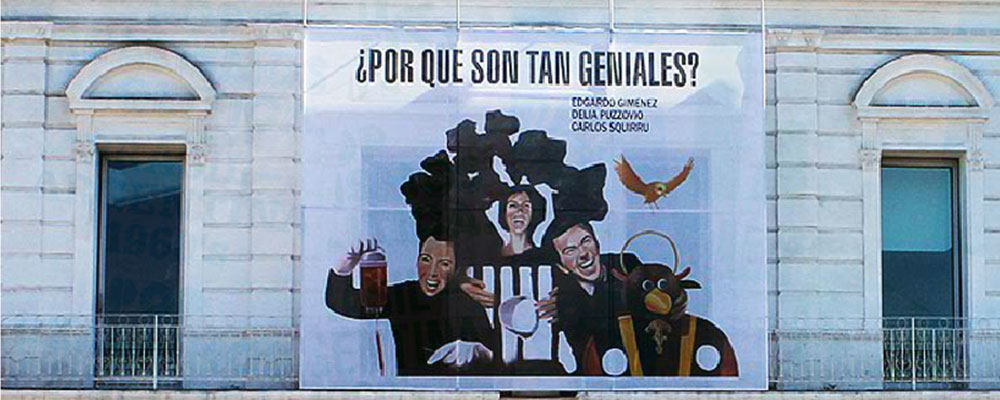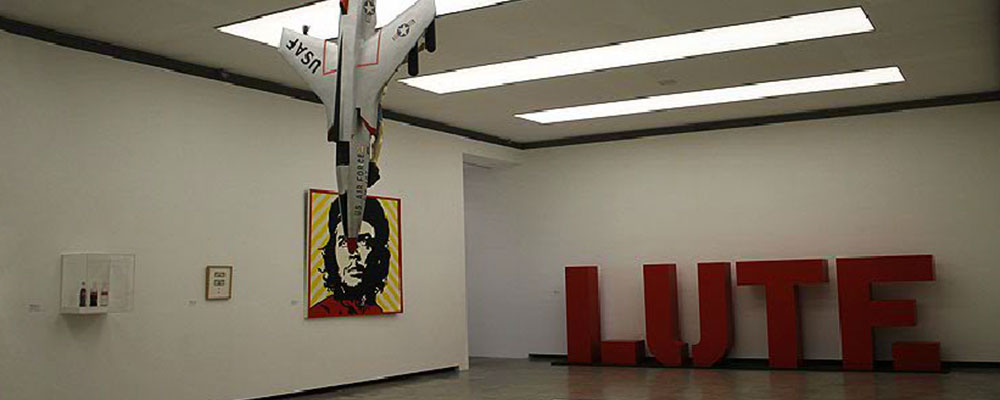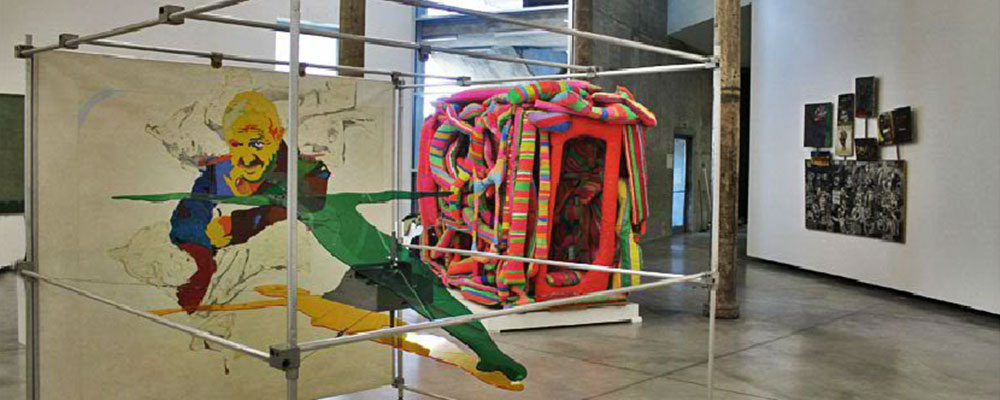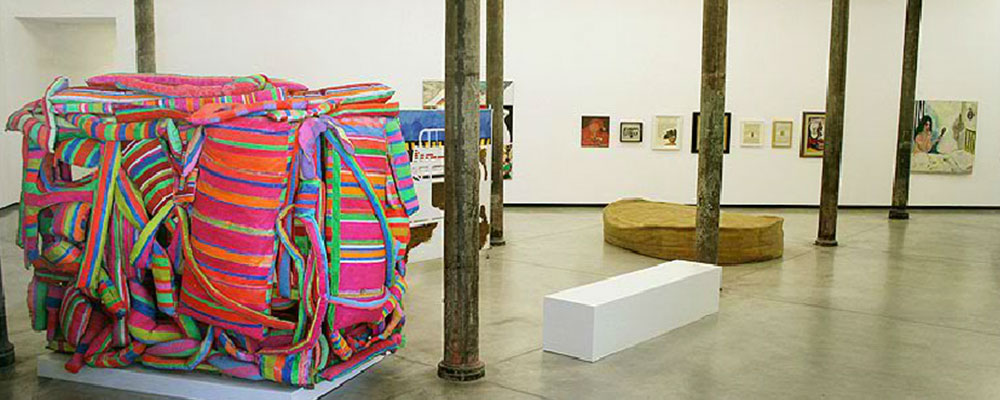PRESENTATION
Art of Contradictions. Pop, Realisms and Politics. Brazil – Argentina 1960
Curators: Paulo Herkenhoff / Rodrigo Alonso
Starting on Saturday, July 14, Fundación Proa presents Art of Contradictions. Pop, Realisms and Politics. Brazil – Argentina, 1960. Curated by Paulo Herkenhoff and Rodrigo Alonso, the exhibition evidences the effervescence of artists, as well as the challenges they faced, as they navigated the eagerness to modernize and the urgency of revolutionary struggles.
In the 1960s, a decade of deep changes, Brazil and Argentina developed their own vision of Pop Art. The icons of Che Guevara, Coca-Cola, and the dollar bill are images of resistance and struggle. The happening and participation art left institutional spaces behind to take to the spaces of daily life. Aesthetic practices partook of pop culture and the power of reality organized artistic experience. Experimentation was bound to commitment.
Pop, Realisms and Politics… brings together more than 100 works by 59 artists; it includes films, paintings, installations, drawings, documents, performances, and photographs belonging to outstanding museums and private collections.
The 300-page catalogue contains reproductions of the works in the exhibition, as well as previously unpublished texts by the curators and a dossier of essays and manifestos from the period. Gonzalo Aguilar provides a contextual framework and a timeline highlights the major events.
Pop, Realisms and Politics… will travel to Museu Oscar Niemeyer, Galleria d'Arte Moderna e Contemporanea di Bergamo (GAMeC) and the Museu de Arte Moderna do Rio de Janeiro (MAM RJ).
Pop, Realisms and Politics. Brazil – Argentina is made possible by the Lei de Incentivo à Cultura. Ministério da Cultura - Brasil and the Brazilian Embassy in Argentina, as well as the support of Tenaris - Organización Techint.
About the Exhibition
In asserting the importance of studying the connections between Brazil and Argentina in the sixties, Paulo Herkenhoff based his argument on two events that, in his mind, affected the evolution of Brazilian art: the Nueva Figuración exhibition and an exhibition of the work of Antonio Berni, both of which took place in Brazil in those years.
His thoughtful discourse, conviction and hypothesis led us to conclude that it was indeed important to the interpretation of art from both countries to undertake a thorough investigation of this topic. For the past two years, Fundación Proa has been producing exhibitions and catalogues on the sixties, specifically Imán: Nueva York and SAP: Sistemas Acciones y Procesos. This new challenge was, then, in keeping with our exhibition program. Bruno Assami was the one who took charge of coordinating the project and we once again turned to Rodrigo Alonso for collaboration.
The research uncovered creativity, multiplicity of disciplines, rebellion, and the crossing of limits, all of which led to a new moral outlook that changed a great many habits. Artists shattered existing structures and embraced political commitments. They created images that have proven pivotal to 20th-century art.
Art of Contradictions. Pop, Realisms and Politics 1960 brings together an outstanding group of works produced during the sixties. The images in it document the period and the wide range of territories in which artists experimented, pushing limits with the conviction or dream of changing the course of history.
As if playing a four-hand piano piece, the curators silently assembled a selection of works in accordance with the overarching notion they had established: immersion in ambiguity and contradiction. Thus, the images gave shape to a solid body of work with great iconographic power. As Paulo Herkenhoff writes: “Once it was understood that art could not change society, it took on the power to transform the critical understanding of the world.” Rodrigo Alonso, meanwhile, concludes: “In putting into effect the ´experimental exercise of freedom´ of which Mário Pedrosa speaks, the gap in South America between the media-driven exaltation of consumerism, on the one hand, and the political and socio-economic realities of its inhabitants, on the other, gave rise to dislocations that yielded parody as well as outright critical resistance.”
The exhibition composes a whole out of countless fragments, works in a dialogue based on their shared historical moment. Our research showed that there were few points of contact between the artists working during this period or the institutional spaces that housed their work. The institutions were primarily concerned with knowing and making themselves known in the world, neglecting to a certain degree what was closest at hand. Our research also showed that while many of the artists were friends who may have participated in the same events in New York or Paris, they rarely met in Buenos Aires or the cities of Brazil.
Nonetheless, their works do betray affinities. Issues like mass consumerism, advertising, design and fashion were at the core of artists' critical resistance to aesthetic tendencies from the first world. The streets were seized for public events and museums turned into spaces of participation.
This exhibition marks the first time that these fifty-nine artists and more than one hundred and fifty works, photographs and documents have been brought together. In surveying these works, the viewer is taken on a journey through time to an age of illusion, criticism, struggle and deep convictions.
This catalogue evidences the creative excitement of the period and brings into circulation images that had been forgotten as well as others that are quite well known. It also contains never-before-published texts by curators Paulo Herkenhoff and Rodrigo Alonso, as well as a text by Gonzalo Aguilar that serves to outline and contextualize the events surrounding the art scene. It includes a selection of historical writings that immerse us in the points of view and reflections operative in the decade, specifically texts in which Lawrence Alloway and Pierre Restany describe moments from the history of the two countries. Artists are also present in the catalogue's texts in the form of manifestos, and critics in surprising essays on the happening, Pop art and mass culture.
This unique and remarkable exhibition was possible thanks to coordinated efforts and convictions. First, Paulo Herkenhoff, who accurately discerned the existence of an endless field of research; then Bruno Assami, who organized and presented the project, and the means to make it happen. He was correctly convinced that it would constitute a major contribution to the history of art from Brazil and Argentina. Rodrigo Alonso, with his characteristic curiosity and diligence, soon agreed to participate in the project.
The exhibition has awakened a great deal of interest. It is scheduled to travel first to the Museu Oscar Niemeyer in Curitiba, until the end of 2012, and then in February of 2013 it will be presented at GAMEC, Galleria d ´Arte Moderna e Contemporanea di Bergamo. The exhibition will close at the Museu de Arte Moderna in Rio de Janeiro.
It would have been impossible to even conceive of putting together this extraordinary body of works without the generous support of so many collectors. We extend our most heartfelt thanks to them all. We would also like to acknowledge and pay tribute to Gilberto Chateaubriand for his ability to perceive the value of what his “artist friends” were doing, thus giving shape to one of the most important art collections in Brazil. We also thank Carlos Alberto Chateaubriand and the Board of Museu de Arte Moderna for generously lending us works from that museum's collection.
We thank Luli Hunt and her team, the staff of Proa and everyone else who has done so much for this exhibition.
We would like to mention especially the board of directors of Tenaris, in Brazil and Argentina, who, due to an understanding of the importance of these artists and curators, decided to support this exhibition throughout its tour. We also thank the Brazilian Embassy in Argentina that has generously contributed, and the Board of Directors of Ternium that has supported this publication.
To all of these players, to the artists, the collectors, the institutions and their staffs, we extend our deepest thanks.
Adriana Rosenberg
President
Fundación Proa
Exhibition credits
Art of Contradictions. Pop, Realisms and Politics. Brazil – Argentina 1960
Project Directors: Bruno Assami / Paulo Herkenhoff / Adriana Rosenberg
Curators: Paulo Herkenhoff / Rodrigo Alonso
Organization: MAM RJ / Fundación PROA
Coordination – Productuon: Cynthia González García / Luli Hunt – Cidadania Corporativa
Design: SPIN / Fundación PROA / Soledad Oliva / Pablo Zaefferer
Conservation: Teresa Gowland / Rafael Rodrigues / Andrea Zabrieszach Santos
Montage: Esteban Campili / Mariano Ferrante / Eduardo Gismondi / Diego Mur
Education: Rosario García Martínez / Paulina Guarnieri / Camila Villarruel
Educators: Agostina Gabanetta / Mariano Gilmore / Mercedes Longo Brea / Laia Ros Comerm
